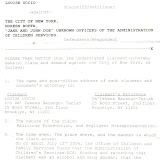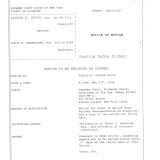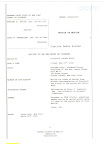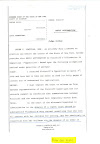Of course keeping children in foster care longer and longer has nothing to do with the "extra" funding the States receive for the length of time children spend in the system.
Please take a look at FAMILIES FOR ALL: DOING RIGHT BY CHILDREN IN FOSTER CARE
Where Thomas Atwood, President and CEO of the National Council for Adoption (NCFA).
complains about children not being adopted because of the Title IV federal funding abuses. Nonetheless, let us read these following stories and buy into the hype that parents have gone wild and abuse their children at higher and higher rates every year. [Note though, these insane parents have only begun abusing their children at such alarming rates since it's become profitable for the child protective services to claim those facts to be true.
Please after you read the following stories sign our petition at the end requesting an investigation into the systematic abuses of innocent children and families accross america!
Additionally, this attorney must be mistaken when he blows the whistle on CPS and the truth.
Perhaps Senator Nacy Schaefer gets her point accross CLEARLY on the abuses taking place in her article-
November 16, 2007 - THE CORRUPT BUSINESS OF CHILD PROTECTIVE SERVICES
Last but not least, Bob Apples article SR.com: Apple puts spotlight on CPS will add to the growing number of reps willing to take a stand.
________________________
There's been a dramatic increase in abuse and neglect charges filed against city parents, and Family Court is overwhelmed again.
Editor's Note: New York City's family courts, which process charges against parents charged with abuse or neglect, and hold frequent hearings for every foster child in the city, are overloaded with cases. The reality is so stark that judges, parents, lawyers and government officials all agree that something must be done. City Councilman Bill de Blasio, who chairs the general welfare committee, held a hearing last week on the issue. Though he and other committee members were indignant, they couldn't really find anyone to rake over the coals. Instead they commiserated with John Mattingly, commissioner of the city Administration for Children's Services, and Ronald Richter, who served until recently as ACS deputy commissioner for Family Court legal services (he's now the mayor's family services coordinator), about the overworked judges and attorneys, frustrated parents – and ultimately the children who may be suffering.
The new issue of Child Welfare Watch – co-published by the Center for New York City Affairs at The New School and City Limits' sister policy institute, the Center for an Urban Future – explores the situation. A major contributor to the caseload is the spike in charges brought in Family Court since the murder of young Nixzmary Brown two years ago this month. Some say the thousands of additional cases are an overcompensation for that tragedy (see Child Welfare Watch's recommendation on p. 2) but ACS supports the expression of vigilance. "Do you inadvertently become part of the problem if you add to the burden of a system already overloaded?" de Blasio asked. Mattingly didn't think so.
There is hope for Family Court in the possibility that as many as 19 new judges will be allocated to the city. A request for 39 new Family Court judges statewide from New York state's chief judge, Judith S. Kaye, is now pending before the legislature. In conversations with state leaders, Mayor Bloomberg has personally pushed for NYC to get more judges, says spokesman Jason Post. They can't arrive too soon. – Karen Loew
* *
It's a hectic autumn day in Ilana Gruebel’s Brooklyn courtroom, which is scheduled to handle seven foster care hearings involving more than a dozen children. And that’s just the day’s overflow from the courtroom next door.
Despite her packed schedule, Gruebel isn’t a judge. She’s a court-approved referee who oversees hearings that can’t find a home on Judge Arnold Lim’s crowded docket in Brooklyn Family Court. State law requires Family Court to hold frequent hearings for every foster child in the city, to ensure they are in foster care for the shortest time possible. The overwhelmed courts are turning more duties over to referees, court middlemen of sorts. They relay information from the hearings to judges, who ultimately decide whether and when children return to their parents.
Attorneys for the Administration for Children’s Services (ACS) have vastly increased the number of parents they charge with abuse or neglect in Family Court. The number of new petitions filed by ACS in such cases is up 150 percent since January 2006, and the total number of hearings on these new petitions has more than doubled in just two years, according to court records. As a result, New York City’s Family Courts are near the breaking point despite years of attempts at reform, according to several judges and other court observers.
One consequence is that children are spending more time in foster care waiting for their families’ cases to be resolved. For children experiencing foster care for the first time, the median length of stay before returning home increased to 11.5 months in fiscal year 2007, up from 8.2 months in fiscal year 2005.
Attempts to relieve some of the pressure by shifting cases to referees and court assistants have helped, some judges say, but the sheer volume of cases has been crippling. Because every judge is so overloaded, they say, the court has lost the ability to make well-informed decisions on the cases before it.
“You’ve lost any responsible [judicial] consideration of the merits of the case,” says Judge Lee Elkins of Brooklyn Family Court. “It’s a system that’s out of control.”
“Children are experiencing greater delays in permanency,” adds Judge Bryanne Hamill, also of Brooklyn. “The dramatic increase in filings [is one factor]. And the court has to use its precious time to hold emergency hearings.” The result, she says, is that it has become much more difficult to move kids through the system and out of foster care.
The rapid increase in cases coincided with new court reforms that were supposed to improve the quality of judicial case oversight. Two years ago, the state legislature set out to transform Family Court and improve the speed and effectiveness with which it handled cases. The Permanency Law of 2005 required judges to track cases far more closely than in the past and mandated that ACS and the city’s nonprofit foster care agency caseworkers provide everyone involved in cases with extensive, semi-annual reports on each child’s progress. The law was put in place after a scathing 2003 federal audit condemned the performance of New York’s Family Court and threatened the city with the possible loss of hundreds of millions of dollars in foster care reimbursements.
The new law was intended to move foster children back home or into adoptive placements more quickly. But it hasn’t worked out that way. While legislators assigned more work to the already struggling courts and the judges, lawyers and caseworkers who toil there, they did not allocate additional funding. And then, just as the sweeping new mandates took effect, a flurry of publicized cases of child murders, culminating in the 2006 Nixzmary Brown case, led to a surge in the number of reports of abuse and neglect— a surge that continues two years later. City lawyers accelerated the pace of Family Court filings, and ever since, the courts have been flooded with cases.
**
In 2006, ACS filed 12,472 new abuse and neglect petitions in Family Court, up from 5,059 in 2005. This rapid pace continued in 2007: there were an average of more than 1,050 such petitions each month during the first nine months of the year, the most recent data available.
The increase reflects two major changes in policy and practice at ACS since the Nixzmary Brown murder, both of which have contributed to the huge increase in petitions involving parents suspected of abusing or neglecting their children.
First, the city is today removing far more children from their parents and placing them in foster care than they were in 2005. Currently, the city places about 7,200 children in foster care every 12 months, compared to fewer than 5,000 before January 2006. (The pace of removals, however, remains substantially below what it was in the late 1990s, when as many as 12,000 children entered foster care in one year.)
Second, ACS has dramatically altered the way it uses the Family Court to guarantee parents’ cooperation with agency caseworkers and to compel participation in services such as drug or alcohol testing and treatment, mental health counseling or parenting classes. In thousands of cases each year, the city now requests that judges grant caseworkers the authority to keep tabs on parents and their children for 6 months or more—well beyond the standard 60-day child protective investigation.
Before January 2006, ACS usually sought court authority for family supervision in fewer than 200 cases each month. Today, ACS routinely files such petitions against 400 or 500 families each month. In August 2007, they filed nearly 800.
“It’s important for us to have the jurisdiction to continue to track how children are faring,” says Ron Richter, former deputy commissioner for Family Court legal services at ACS and now the mayor’s family services coordinator. “One way to do this is to seek the authority of the Family Court to continue to monitor a family with the children at home, without seeking a removal.
“I’m pleased we have not had a rush to removal,” Richter adds. “But I’m not surprised to see the agency’s caseworkers and attorneys being as cautious as we can be.”
Several city officials say privately that caseworkers have become far more cautious than in the past. After Nixzmary Brown’s murder, ACS officials determined that child protective investigators were closing a high percentage of cases even after finding evidence of abuse or neglect. Today, such “indicated” cases are rarely closed without services.
Sometimes, says Richter, a court order is the most effective way to make sure parents do what’s asked of them while allowing ACS to be confident the children remain well cared for.
The administration recognizes the burden the policy has imposed on the judges, says ACS Commissioner John Mattingly, but he says the cases his agency brings to the courtroom belong there. “That has put a huge strain on the court, the filing increases,” he acknowledges. “We are working with the judges now to come up with a plan in which requests for supervision can be handled in a more expedited manner. We are all very worried that cases in court have gone up so much because the reports have gone up.
“We need more referees, more judges,” Mattingly adds. “It looks like [the numbers of filings] isn’t going to go down. We’re all concerned about that and really want help from Albany to deal with the crisis.”
Richter says ACS is currently developing new guidelines. One may require that emergency conferences be held on each case before any court filing, bringing together child protective staff, family members and community providers in hopes of finding a safe alternative to either removal or long-term supervision of the family. This practice began in much of Manhattan during the last weeks of 2007, but the impact on the court is not yet evident.
* *
The city’s heavy reliance on court supervision orders has stirred a growing controversy among judges, attorneys and parent advocates, some of whom charge that ACS has effectively usurped the court’s authority by overwhelming its judges.
“If the court is not able to make timely, independent judgments about whether there needs to be a removal, or whether there’s been neglect, or whether a child should return home, or a family needs supervision, then the agency can do pretty much whatever it wants,” says Judge Elkins.
He blames Commissioner Mattingly for failing to demand that city caseworkers make a distinction between children in need of immediate intervention and those who don’t necessarily need the court involved. “If you’re not exercising executive discretion, that’s irresponsible,” Elkins says. “You’ve got sexual abuse cases, abandonment cases, a whole variety of very serious neglect cases that need to be addressed on a timely basis. We simply don’t have the luxury of being a hammer against a parent who doesn’t want ACS in their lives.” *
Parents’ attorneys agree. “I see it very simply as people started passing the buck to Family Court,” says Kara Finck of The Bronx Defenders, which provides free representation to parents. “They don’t want to be on the line for this if something goes wrong in a case.”
The constant fear of being caught in error on a case and shouldering the blame was less common in 2005. Instead, attention at that time was focused on improving the accountability of the court itself. Under the Permanency Law enacted that year, children were supposed to be guaranteed a more thorough and attentive court than in the past. After a child is placed in protective foster care by ACS, a hearing to track progress toward a permanent placement is supposed to be held twice each year. The hearings must be attended by all key stakeholders: a law guardian representing the child’s interests, a lawyer representing the family, a lawyer representing pre-adoptive parents, an ACS attorney and a foster care agency caseworker.
The intended tenor and focus of court hearings also changed under the new law. The hearings were to be guided by detailed caseworker reports on progress toward the child’s eventual exit from foster care, including updates on education, health status and visits with parents.
But today, the hearings routinely fail to follow the law’s requirements.
On an October morning in Gruebel’s courtroom, the referee held one hearing for a child in foster care even though the caseworker was missing and the most recent progress report was three months out of date. The case was already overdue: the last hearing had been seven months earlier. Another hearing had been set for the summer, but it was rescheduled after the child’s caseworker failed to appear—she said her offices had been flooded. At this rescheduled session, the caseworker again failed to appear, because she was mistaken about the time.
But the child’s law guardian and the mother’s attorney were both present, as was another caseworker from the same agency who happened to be in the courthouse. That caseworker was assigned to one of the child’s siblings, so Gruebel asked her to participate and held the hearing based on an outdated, unofficial progress report from the summer.
“All I have to go on is an unsworn permanency report,” said a frustrated Gruebel. “The goal of this family is reunification, and that is the most crucial goal. I really need the worker here.”
Nonetheless, she approved a request by the child’s law guardian for play therapy, and the mother’s request to change her weekly visitation details to accommodate a new work schedule. Then, noting that the caseworker had failed to appear, Gruebel scheduled another hearing for the following month.
* *
Repeated court delays can prove devastating for a family seeking to reunite. Parents who want to hold onto the right to care for their children must satisfy goals established during these hearings, such as getting counseling or securing an adequate job and apartment.
In Hamill’s Brooklyn courtroom, reaching the “fact-finding” hearing, akin to a civil trial, in an abuse or neglect case may now take a year, she says, when it used to take five months—thanks largely to the increased workload. These hearings are regularly bumped off of her schedule by emergency hearings for petitions brought by ACS against other parents.
Hamill says her caseload has grown from about 300 in 2005 to almost 900 today. In Brooklyn, the total number of abuse and neglect filings tripled in 2006 and has remained high, according to court data.
“My schedule is full out until February or March of next year,” Hamill said in early October 2007. “Anything new that comes in now will be bumping cases that were scheduled three months ago.”
Parent and child advocates, lawyers and judges almost uniformly supported the new Permanency Law when it was being developed in 2005. There was broad agreement that Family Court was dysfunctional, decisions were made on inadequate information and permanency plans were poorly documented.
But today, they mostly agree the situation is intolerable—and maybe worse.
“Intelligently, the law was designed for increased judicial oversight,” says Sue Jacobs, executive director of the Center for Family Representation in Manhattan, which provides legal representation and counseling for poor families in crisis. “It’s not being implemented well because no additional resources were provided for any of its parts.”
“It is frustrating that the law was passed with no financial resources,” agrees Richter of ACS. “It only became law because an overwhelming number of advocates, government and court personnel were overwhelmingly supportive.
“Be careful what you wish for, I guess.”
The 2005 law expanded the court’s oversight to include children aged 18 to 21 in foster care, requiring permanency hearings for them for the first time and making them more likely to receive social services and supports as they transition to adulthood. But that provision also put additional stress on the court system, adding an estimated 600 cases to the Family Courts in 2006, according to the New York City Bar Association.
Meanwhile, the number of Family Court judges has remained at 47 since 1991. Of those, 27 hear abuse and neglect cases, according to the state Office of Court Administration.
A 2006 survey by New York City Family Court found that, during the studied week, 45 percent of foster care hearings required multiple court appearances before they could be completed. Some 30 percent of hearings were adjourned because the required progress report was missing or incomplete. Of those cases with complete reports, a mere 12 percent were submitted two weeks in advance, as the law requires.
At least one part of the system has seen some relief: the Bloomberg administration added $3.4 million in city tax dollars to the ACS budget to pay for more attorneys. Since 2005, the agency has expanded its legal staff from about 150 to 220, with each attorney carrying about 80 cases. The agency’s ultimate goal is to employ 235 attorneys, each with a caseload of about 60, says Richter. The American Bar Association recommendscaseloads not exceed 50.
Caseloads for law guardians, who represent children’s interests during foster care hearings, have grown even more unwieldy than they were before the new law took effect. In a position paper released this summer, the New York City Bar Association’s Council on Children reported that caseloads for staff attorneys at The Legal Aid Society’s Juvenile Rights Division have grown to between 250 and 300 per attorney, on average, compared to between 150 and 200 before 2006. To keep up, they routinely work overtime without additional pay. The city’s bar association has called for a 50 percent increase in spending on law guardians in New York City, or $13 million, to reduce caseloads.
On that same October day when Gruebel, the referee, was scheduled to hear seven foster care hearings, Judge Hamill was unable to hear a single one. Her day was filled by emergency hearings all morning and intake of new cases all afternoon.
Gruebel’s courtroom offers a picture of those difficulties, too. Mid-morning, Gruebel was spending a crucial half-hour sitting in silence at the dais, waiting for a missing lawyer. The lawyer was in another hearing, caught in the undertow of the mercilessly busy courthouse.
Gruebel and the child’s law guardian grimaced at one another and waited. Twenty-five minutes later, their window of time had closed. They opened their calendars and picked new hearing dates, five and six weeks away.
The guardian ran to a hearing in an adjoining courtroom, and Gruebel sighed at the missed opportunity.
“The time is so precious,” said Gruebel. “To me, this is like a travesty.”
Original Article -
City Limits: News for NYC's Nonprofit, Policy and Activist World
___________________
Please sign the petition asking Henry Waxman to investigate the abuse of federal funds destorying our innocent children!
Federal Funding and Federal Laws Petition : [ powered by iPetitions.com ]























1 comment:
However, the majority of the cases that come to family lawyers are the divorce, separation, abuse or child custody cases. A number of details need to be considered when it comes to these cases and family lawyers are specialized in all ...
Post a Comment